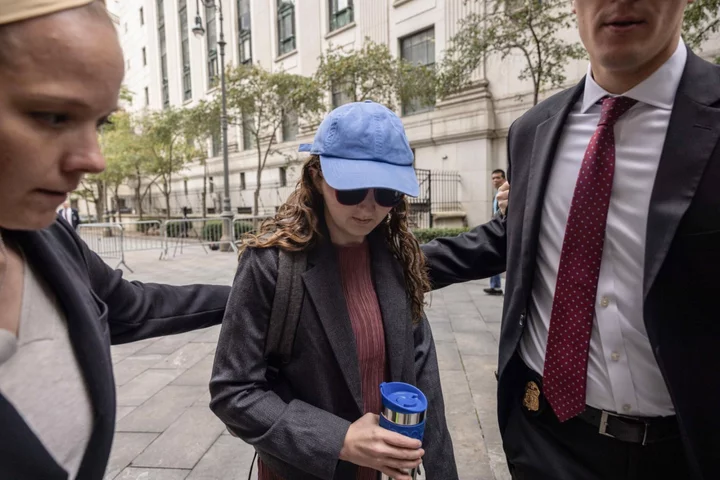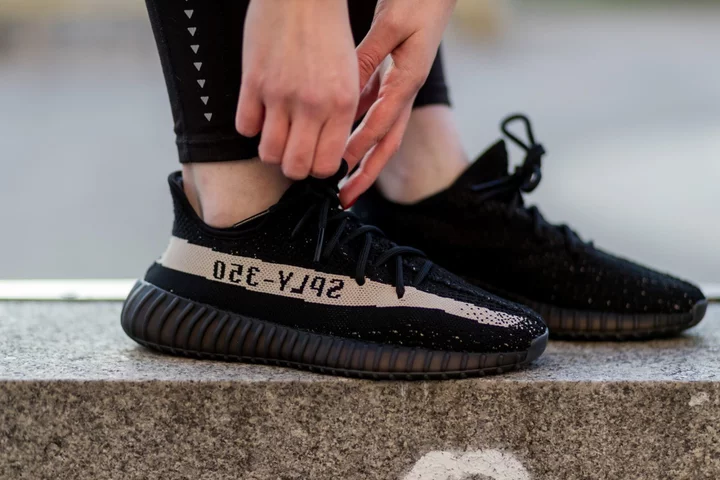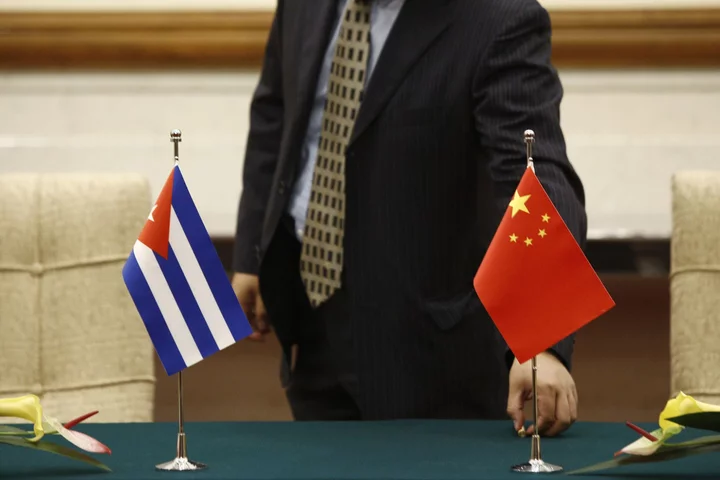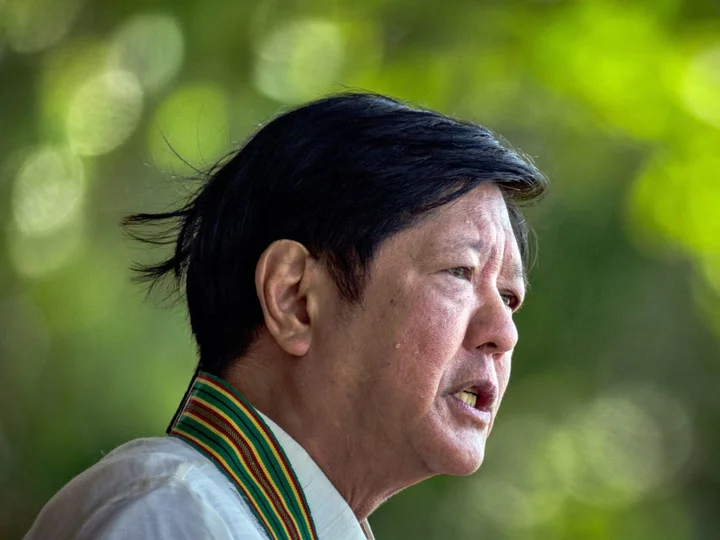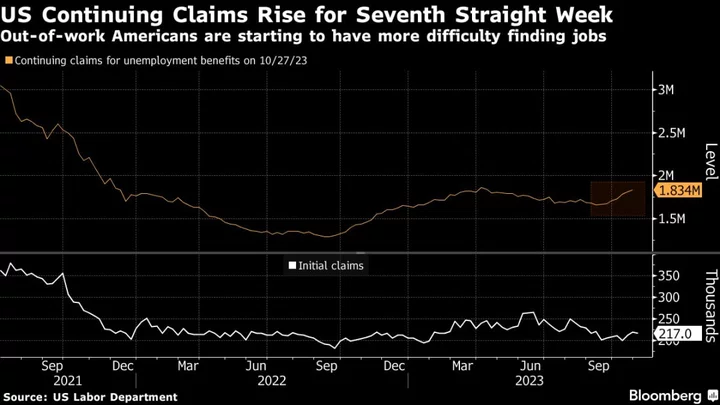Caroline Ellison took the witness stand Tuesday afternoon and within minutes pointed to her former boss and boyfriend, FTX co-founder Sam Bankman-Fried, as the man responsible for the loss of billions in customer funds and the collapse of the cryptocurrency platform.
“He’s over there wearing a suit,” the former chief executive officer of Alameda Research said, acknowledging Bankman-Fried across the courtroom. “He directed me to commit these crimes,” she told jurors at a federal court in New York.
In her first day of testimony, Ellison, 28, portrayed Bankman-Fried as the brains behind the company operations, who knowingly transfered over $14 billion of FTX customer funds to the sister hedge fund, directed her to ignore concerns about auditors, and knowingly inflated Alameda’s balance sheet to secure loans.
Over nearly three hours, Ellison talked about Bankman-Fried through an intimate lens. The two met at Jane Street Capital and started dating on and off after she joined Alameda. She described Bankman-Fried as someone who was very interested in politics and wanted to use his money and influence. In private conversations, Bankman-Fried once told her that he calculated that he had a 5% chance of becoming the president of the US one day.
Customer Money
Ellison’s testimony was among the most highly anticipated in the fraud trial, after she pleaded guilty and agreed to cooperate with the government in the case against Bankman-Fried. Prosecutors have portrayed her as one of the few people in his inner circle who knows the truth about the alleged siphoning of billions of dollars in FTX customer funds to the affiliated trading firm.
“What was the defendant’s involvement in using FTX customer money as a source for funds for Alameda?” prosecutor Danielle Sassoon asked.
“He said FTX would be a good source of capital and he set up a system that allowed Alameda to borrow from FTX,” Ellison said and told the jury that Alameda took several billion dollars from FTX customers and used it for its own investments and to pay back lenders.
Ellison said Alameda borrowed $100,000 to as much as $10 million at a time from FTX customer money that it used “for trading purposes.”
“I was somewhat concerned because I thought it was something that customers weren’t aware of and wouldn’t be happy if they knew about,” Ellison says.
Line of Credit
The core of the government’s case is that Bankman-Fried treated Alameda, a trading firm affiliated with Bankman-Fried’s FTX cryptocurrency platform, as a personal ATM machine. Alameda drew on a line of credit from FTX that was spent on real estate, political donations and losing trades. Alameda eventually accounted for an $8 billion hole in FTX’s books.
When asked if she was ever told about the exact size of the line of credit, Ellison replied that she didn’t recall, but believed that it was unlimited. In 2020, she asked Bankman-Fried whether this line of credit would show up in FTX’s audit, he told her “don’t worry, the auditors aren’t going to look at that,” Ellison testified.
Ellison testified that she asked about the line of credit because if she was an investor, that would be “important information” about FTX’s finances that she would’ve wanted to know.
Ellison said that Alameda’s money for trading was initially funded by loans from acquaintances. Weeks after she started at Alameda in 2018, Ellison said that the majority of them recalled their investments, as Alameda was performing poorly.
Bankman-Fried, who Ellison called Sam during her testimony, said “it was a big priority” for the company to get more loans, “in order to do more trades or have the ability to do whatever valuable things came up,” like investments or acquisitions. Ellison said Bankman-Fried set up a system to allow Alameda to borrow from FTX.
FTT Tokens
Ellison detailed how Alameda began to borrow money and rely on FTX’s own crypto token to bolster its balance sheet. For a lot of 2018, Alameda had trouble getting loans, Ellison said. It started to improve in early 2019, and got better later in the year after creating its own crypto token, FTT, she said.
Shortly after FTT was listed, Bankman-Fried said Alameda should start putting FTT on its balance sheet in order to get more loans from third-party lenders, Ellison recalled.
“He tended to be pretty careful about not discussing it too openly,” Ellison said, noting that at one point he “got upset with me” because they were talking about FTT trading in front of others.
Initially Alameda didn’t include FTT holding in balance the sheet, she said, because it would have been misleading given that Alameda couldn’t sell that much of the crypto token. Eventually, however, she put FTT on Alameda’s balance sheet “because Sam directed me to do so.” Bankman-Fried thought that it would help Alameda get more loans.
When she shared the concern with Bankman-Fried, he replied that as long as it’s labeled clearly as FTT it’s fine, Ellison recalled.
Salary
Ellison made a salary of about $200,000 a year at Alameda, topped up by generous bonuses twice a year. The largest, in 2021, was $20 million.
Ellison “felt it was a big job and I wasn’t very experienced.” But Bankman-Fried felt she was the right person for the role, she said, adding that “for any major decision I would always run them by Sam... and defer to Sam.”
But she had big concerns about the number of loans that continued to pile up. She said that Alameda had $5 billion in loans to Bankman-Fried and other FTX insiders as of mid-2022, months before the bankruptcy filing. A lot of those loans were being spent on investments in FTX and other companies including a bitcoin mining firm and an artificial intelligence company.
In late 2021, Bankman-Fried was directing Alameda to borrow “as much money as we could from whatever sources we could find,” she said.
“I thought it was risky to borrow money through open term loans” to put them into illiquid long-term investments, she said.
Ellison’s testimony followed Gary Wang’s, another FTX executive and close Bankman-Fried friend who pleaded guilty and agreed to cooperate with prosecutors.
Throughout Wang’s questioning, defense attorney Christian Everdell tried to show that Alameda’s use of customer funds was far from secret and that Bankman-Fried acted in good faith.
Subscribe to the Bloomberg Crypto newsletter for the latest updates and analysis as Sam Bankman-Fried’s trial continues.
--With assistance from Allyson Versprille, stacy-marie ishmael and Chris Dolmetsch.
(Adds details on Wang testimony in fifth paragraph.)
Author: Bob Van Voris, Yueqi Yang and Ava Benny-Morrison

